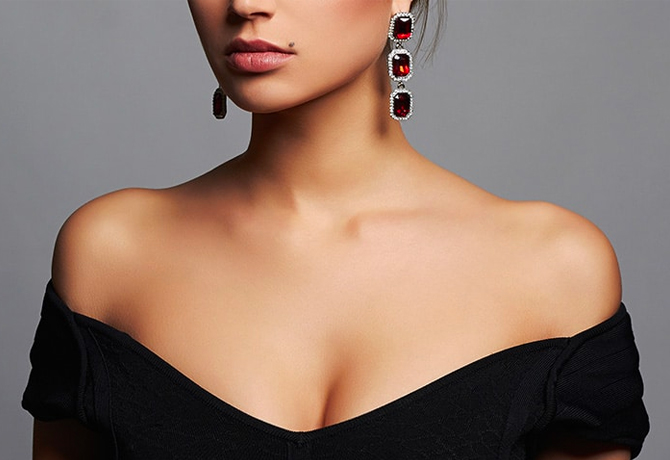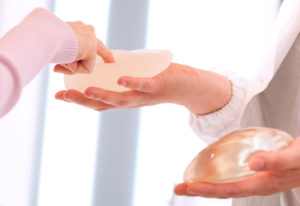Breast augmentation: What to know about one of the most popular cosmetic surgeries in Malaysia

Cosmetic surgical procedures have gained popularity (and along the way, notoriety for all the wrong reasons) in Malaysia, with a plethora of aesthetic clinics offering anatomical enhancements for almost any part of the body, from tummy tucks to labiaplasty. Another fascinating—albeit jarring—tidbit shared by the American Society of Plastic Surgeons (ASPS): a whopping 18 million people underwent surgical and minimally invasive cosmetic procedures in the United States in 2018.
In this image-conscious society where Kim Kardashian West’s nose is highly requested in clinics, it’s no longer a challenge to look as good IRL as you do on Instagram thanks to these cosmetic treatments. One of the fastest growing cosmetics surgeries in Malaysia is breast augmentation, cementing its spot on the top five list just behind rhinoplasty (nose jobs) and double eyelid procedures. To learn more about this procedure’s rise in popularity, we spoke to Dr Ng Char Hong, Consultant Breast Reconstructive Surgeon at Sunway Medical Centre on new trends and common misconceptions that women have about breast augmentation:
1. In your practise, what are the main reasons your patients cite for getting a breast augmentation?
There are various factors as to why my patients request for breast augmentation but the most common one would be to look and feel more confident about themselves. Women who aren’t satisfied with their chest are typically more self-conscious and lack self-confidence and self-esteem, and that may also affect their relationships and other areas in their lives.
2. What are the biggest misconceptions that your patients have of breast augmentation surgery?
That “bigger is better”—I always advise them that the best cup size is one that is proportionate to the body shape and the width of the chest. Larger doesn’t always necessarily mean that it looks better on the body.
3. What kind of implants are available and what are the differences and advantages of each one?
In my practise, I only use anatomical (teardrop) implants. The shape is most similar to the natural contours of the breast—full on the bottom and tapered towards the top. In my opinion, textured silicone implants are the best as they give the best shape and is the most natural looking.

Breast Augmentation 101
4. How do you tend to approach surgery with regards to ‘designing’ the post-op breasts? What would you consider the best placement and size of the implant?
I always use inframammary fold incision to minimise scarring—this is most noticeable when the patient is in a standing position (the scar is very discreet and it also follows the natural line). This incision is made under the crease of the breast.
The axillary approach (made in the armpits) is also an option for patients, but I find that the implants can be set too high and it might migrate. As for periareolar incisions, some patients might lose the nipple sensation as the incisions are made around the outer edges of the areola.
The size of the implant depends on the patient’s request, the body shape and the width of the chest wall. The implant cannot be placed within the lateral border of the breast as it is outside the chest wall.
5. What are the difficulties that you face reconstructing a breast post mastectomy?
Post mastectomy reconstruction is totally different from augmentation. Breast augmentation is a cosmetic procedure and the patient will always opt for the perfect and most desired appearance.
However, post mastectomy reconstruction is not a cosmetic procedure. Most patients will want a reconstruction surgery for a balanced look, and also for them to be able to wear their bras and clothes properly. Patients don’t seek a perfect shape and size/equality of both breasts.
In all honesty, the surgeon is likely the one who will want to correct the breast later because we think that it could be better, but most of the time, the patient don’t think it’s necessary i.e. “Don’t bother, I am happy with it.”
Also, reconstruction depends on whether the patient will need further radiotherapy treatment. If it is needed, I will always try to convince the patient to opt for autologous reconstruction instead of implant reconstruction. Autologous reconstruction uses tissue from another place on the body to create the reconstructed breast. Tissue is a great substitute for implants and it will last forever.
If the patient opts for implants, I will also consider the need to add a layer to cover the implant using autologous tissues e.g. latissimus dorsi flap (skin, fat, muscle, and/or blood vessels from the upper back) to reconstruct the breast.
6. Would you say that breast augmentation surgery is rising or falling in popularity?
It is definitely rising steadily here in Malaysia, and I believe worldwide as well. There are a lot of patients who would rather have injections (via fillers) instead of undergoing surgery for proper implants.
I will stress that silicone and hyaluronic injections will affect cancer screening in the future. The free flowing of foreign material in the breast will cause difficulties in performing a mammogram and may obscure any indications of potential breast cancer in mammogram.
In case the foreign material contract an infection, treatment to remove it will prove to be very challenging as we won’t be able to clear the foreign bodies entirely. Some patients will even have to undergo bilateral mastectomy (the surgical removal of both breasts to treat or prevent breast cancer).

Breast Augmentation 101
7. Recently, there was a recall of a brand of textured implants (Allergan) as the use of these implants were associated with the pathologic development of a rare lymphoma. Do you think patients who have had breast augmentation with the recalled implants should have them removed and replaced?
They should. If they choose not to, they will have to monitor their implants very closely.
8. In light of this rise in lymphoma incidence, regular breast checks are imperative. Do implants affect the process of mammograms and self-checks?
They do not affect mammograms and self-checks, and the former will still be able to be perform. What I usually do (apart from a mammogram) is an ultrasound of the breast at the same time as it will give us further information regarding fluids surrounding the implant, and if there’s any leakage. If there are further doubts, I will suggest a breast MRI.
9. Are there any exciting developments in breast augmentation surgeries recently?
New placements of the implants have been introduced for breast reconstruction—specifically, prepectoral breast implants (implants placed over the muscle). This position is the same spot as where the breast tissue used to be, hence it feels more natural than having the implant under the muscle. Also, implants under the muscle may move towards the armpits or wider apart when the muscle is flexed. Personally, I feel that implant placements on top of the muscle give the best and most natural shape.
10. Do you have any advice for those looking to undergo a breast augmentation?
It’s important to do your research and find out the desired size that you want. At times, what the patient wants and the options that are available for them might be different. During the consultation, I will always ask the patient to fill up a balloon with a desired volume of water and place it in their bra to wear it for few days just to gauge how the weight, size and feel of the implants would be.
| SHARE THE STORY | |
| Explore More |



